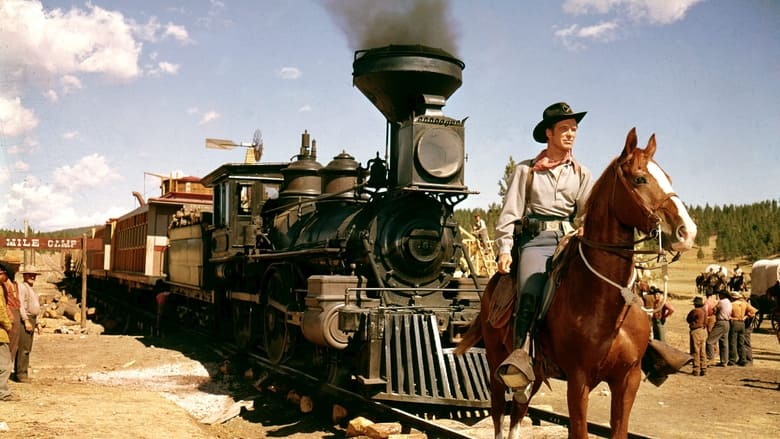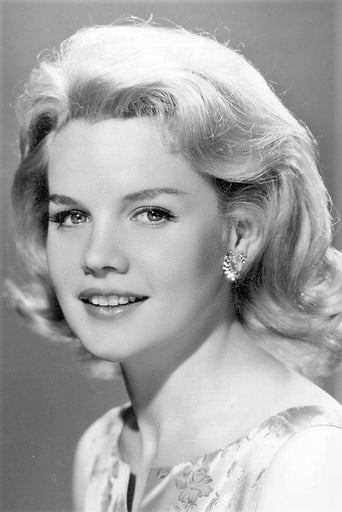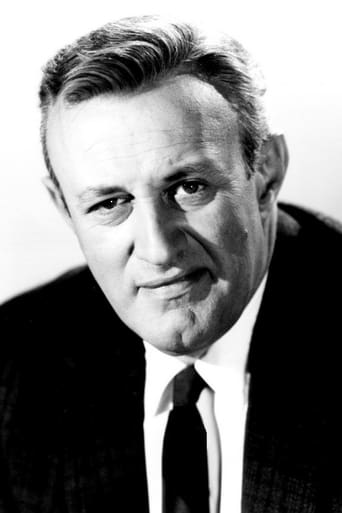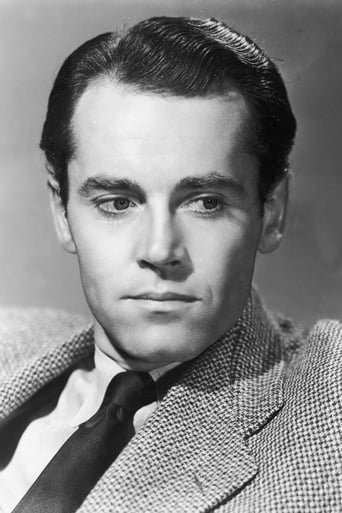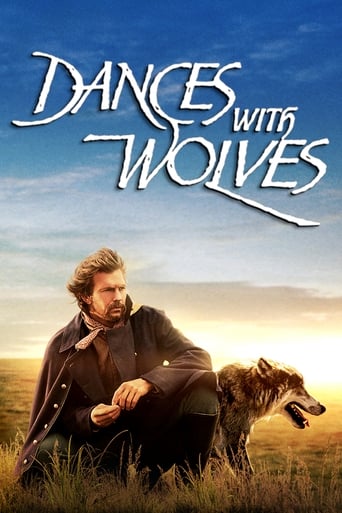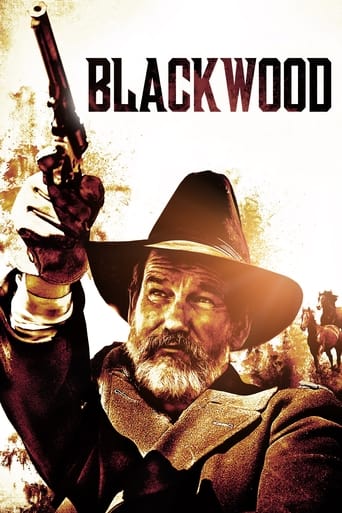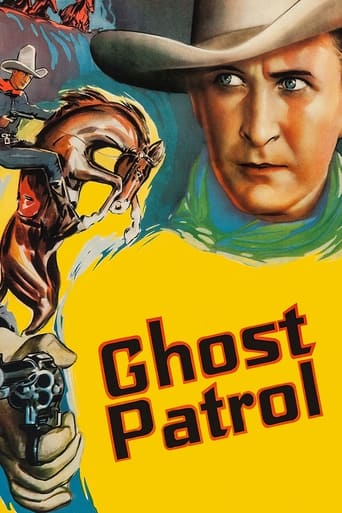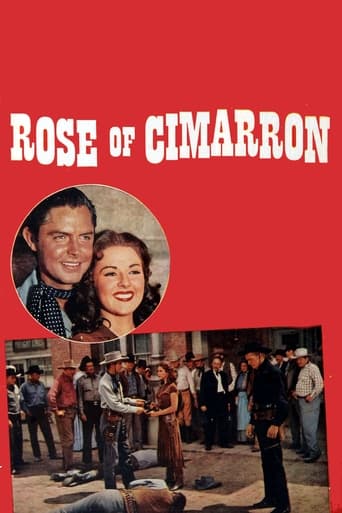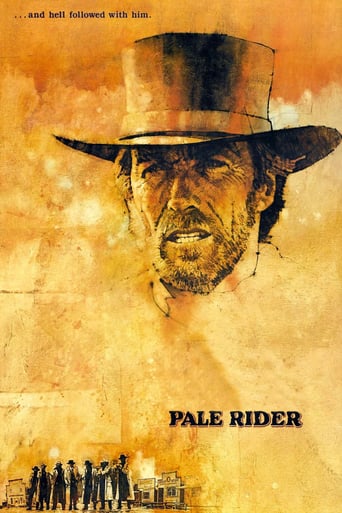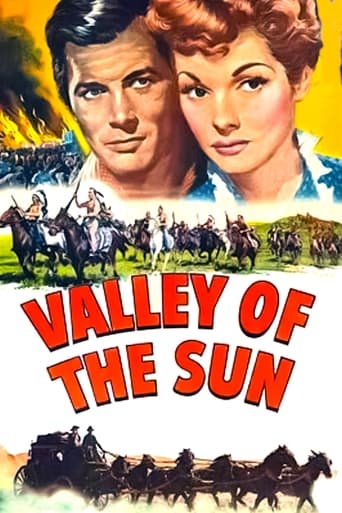How the West Was Won (1963)
The epic tale of the development of the American West from the 1830s through the Civil War to the end of the century, as seen through the eyes of one pioneer family.
Watch Trailer
Cast


Similar titles
Reviews
Surprisingly incoherent and boring
It's fun, it's light, [but] it has a hard time when its tries to get heavy.
While it doesn't offer any answers, it both thrills and makes you think.
One of the most extraordinary films you will see this year. Take that as you want.
Very much like IMAX's grandiose stand against the emergence of internet streaming, Blu-Ray and the 'Golden Age of Television', the 1950's saw studios battling against the arrival of a television in every home, and used the likes of 3D and 'Spook Show Spectaculars' to draw the public in. Another short-lived fad was Cinerama, a process of shooting with three synchronised cameras and creating an ultra widescreen effect in the process. It was a headache for film- makers, notably John Ford, and special cinemas had to be built to house the format that required three projectors and a deeply curved screen.Also like IMAX, Cinerama was intended mainly for documentaries, but its immediate success meant that it wouldn't be too long before studios started to turn to features. The first was The Wonderful World of the Brothers Grimm in 1962, and How the West Was Won came later the same year. The latter is the most ambitious, telling a story stretching 50 years across three generations and boasting a cast of '24 great stars' (as the poster informs us), taking us through the major events of America's expansion further west and employing four first-rate directors - John Ford, Henry Hathaway, George Marshall and the uncredited Richard Thorpe - to bring it to life.Whilst the ambition can only be admired, How the West Was Won is a mixed bag. In part a rough-and-tumble, old-fashioned western that offers differing perspectives of America's venture out west, as Henry Fonda's grizzled buffalo hunter Jethro Stuart laments the bloody consequences of the railroad's arrival under the command of Richard Widmark's ruthless and treaty-dismissing overseer, the film also cannot resist the lure of grand song-and-dance numbers, with Debbie Reynolds husky voice and knee-slapping becoming tiresome very quickly. It also keeps the audience at a huge distance, both emotionally and literally. With so much picture being captured, actors are routinely squeezed into the centre of the frame with their facial expressions too far away to see.Broken up into 5 segments - The Rivers, The Plains, The Civil War, The Railroad and The Outlaws - we follow the Prescott family, led at first by Zebulon (Karl Malden), as they head for the frontier and encounter mountain man Linus Rawlings (a woefully miscast James Stewart). Rawlings falls for eldest daughter Eve (Carroll Baker), and the family spread out from there. Hathaway directs three of the five, with the best being the Outlaws section, which pits George Peppard's Zeb Rawlings. a marshal, against bandit Charlie Gant (Eli Wallach), and delivers a set-piece on top of moving train which is as technically impressive as anything made today (a stunt-man almost died during the filming).Ford's Civil War segment is the slightest but offers an interesting insight into the war. In one fantastic scene, General Ulysses S. Grant (Harry Morgan) drunkly ponders his effectiveness to General William Sherman (John Wayne) as the young Zeb Rawlings listens, demonstrating Ford's lack of fear in showing a brittler side to a man considered an unshakeable American hero. But Ford and the film in general never really commits to the themes it hints at, and this is ultimately what makes How the West Was Won such a frustrating experience. As the camera sails across modern America before the closing credits, I felt slightly appalled at what had been done to this once-beautiful country but couldn't really figure out if this was how the film intended I feel. As a visual experience, it is truly like no other, but it remains oddly hollow emotionally and thematically.
A fun western classic, though not your average type of western, due to lots of romance and adventure that is in this two and a half hour long epic. Three directors (well, four, really), five stories (six, if you count the historical perspective), but with some characters, places and events that tie them together. I liked this approach, although I didn't get just how and when Zeb got a beef with Charlie Gant in the first place (I understand now that he killed his brother, but this wasn't shown anywhere in the film...).Maybe James Stewart isn't the most believable actor to portray a trapper (John Wayne, who only has a very, very small part here, would have been a better candidate, but he wouldn't have come off right in the romantic part of the role), but the ladies are a pleasure to look at and they and pretty much most of the male actors did their jobs admirably (George Peppard and Richard Widmark especially).The Cinerama effect, in combination with the many beautiful settings, is really terrific at times, even if here and the fish-eye effect was probably not intended (liked it, though).This is not the most accurate portrayal of early America for sure, but it will do being just what it is: entertaining for the full duration and with the heart in the right place, with some valid points as well (war isn't funny, the Indians got gypped).A good 7 out of 10.
A family saga covering several decades of Westward expansion in the nineteenth century -- including the Gold Rush, the Civil War, and the building of the railroads.This may be the western for those who do not like westerns. Although I could have done without the overture and intermission (which would cut off ten minutes), the rest is excellent and has more big name stars than can be counted on two hands. For those who love westerns, we have John Wayne (and Lee Van Cleef), and for everyone else we have Jimmy Stewart, Gregory Peck and more...I loved the historical nature of this. It was sort of like the old west version of "Centennial". And the connection to modern Los Angeles was a tad hokey, but at the same time had a good bit of truth to it... a mere 100 years before this film was made, Hollywood was wilderness.
Brilliantly titled, "How the West Was Won" was originally released in a super-widescreen format known as "Cinerama". This was meant to duplicate the human vision span. The film had to be shot using three cameras, with the resulting three pictures segued into a final product. The right and left portions would be slightly curved. MGM's epic looked great in theaters and was a big hit for producer Bernard Smith and the crew. However, the "Cinerama" process had its limitations. Full-screen close-ups were not possible. The positioning of players and sets was difficult to align. And, the lines dividing the separate images were sometimes detectable, especially when released on home video and aired on television...The problems in watching "How the West Was Won" have been fixed, however. The latest home video restoration and current airings on Turner Classic Movies (TCM) look fine. The film's greatest strength is its sprawling landscape, which beautifully compliments the story. Still, there will come a point, relatively early in the running time, when the "Cinerama" limitations make viewing dull. The failure to get close to the performers slows the pace and takes away some of the story's intimacy. Incredibly, John Wayne looks small...The all-star cast is credited alphabetically, but some of the performers are seen more often than others. Initially, you will presume the film stars James Stewart (as Linus Rawlings). However, Mr. Stewart is only the leading man in the first (of five) segments. Even at a distance, Stewart looks amusingly miscast as a hot young stud. The main star is young frontier woman and singer Debbie Reynolds (as Lilith Prescott). Uniting the segments, Ms. Reynolds goes from teenager to family matriarch. She sings and dances, too. The soundtrack music, by Alfred Newman, is very appealing. Ken Darby and others contribute memorably to standards like "Shenandoah" and "When Johnny Comes Marching Home".****** How the West Was Won (1962-11-01) Henry Hathaway ~ Debbie Reynolds, George Peppard, Gregory Peck, James Stewart


